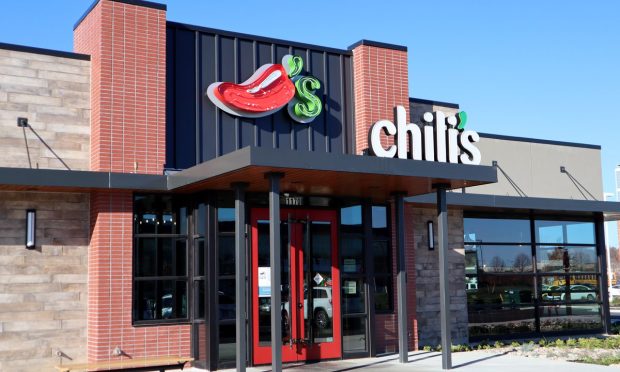Chili’s Exec: Flexibility Is the ‘Guiding Principle’ of Anti-Inflation Value Menu

As restaurants struggle against rising costs for ingredients and supplies, many major brands are leveraging their scale to price out competitors, unveiling new value menus to meet consumers’ increasingly pressing demand for less expensive options. Chains including major quick-service restaurant (QSR) brand Domino’s Pizza, drive-in brand Sonic, Mexican-inspired QSR chain Del Taco and others have announced new value-centric offerings in recent months.
Casual dining giant Chili’s, for its part, announced earlier this month the launch of its new “3 for Me” menu offering a beverage, appetizer and entrée starting at $10.99. Michael Breed, senior vice president of Marketing at Chili’s parent company Brinker International, spoke with PYMNTS about how the brand is using breadth of options as the key differentiator from other value offerings.
Related news: Domino’s, Sonic, Other Brands Launch Deals to Woo Inflation-Concerned Consumers
“Flexibility was a guiding principle in designing this menu,” said Breed.
He noted that, in previous menus, consumers only had non-alcoholic beverage options to choose from when ordering off the value menu, but this update includes the ability to upgrade to an alcoholic beverage such as a margarita, a draft beer or a glass of wine rather than requiring customers to separately place an order for an additional beverage.
By the Numbers
Restaurant prices are rising more and more each month. The Consumer Price Index for All Urban Consumers (CPI-U), reported by the U.S. Bureau of Labor Statistics (BLS) Friday (June 10) that food away from home (i.e., restaurant) prices grew 0.7% month over month in May, up from 0.6% in April, and they grew 7.4% year over year in May, up from 7.2% in April.
See also: America’s Soaring Food and Fuel Problem Drives 8.6% Increase in May’s Inflation
These rising prices are especially concerning given that the majority of consumers are living without much of a financial safety net to fall back on. Research from PYMNTS’ recent study “New Reality Check: The Paycheck-to-Paycheck Report – The High Earners Edition,” created in collaboration with LendingClub, which draws from an April survey of more than 4,000 U.S. consumers, finds that 61% of are living paycheck to paycheck, with 35% of those consumers doing so with difficulty.
You may also like: Report: 36% of Consumers Earning $250K+ Now Live Paycheck-to-Paycheck
As such, it is not surprising that prices are top of mind for many restaurant customers when deciding between different dining options. According to data from PYMNTS’ April study, “The Digital Divide: The Key Factors That Drive Restaurant Choice,” created in collaboration with Paytronix, which draws from a survey of more than 2,600 U.S. adults who regularly purchase food from restaurants, 42% of diners cite everyday prices as an important factor influencing their restaurant choice. Additionally, of that 42%, 21% view this consideration as the single most important driver of restaurant choice.
Read more: NEW DATA: From Outdoor Seating to Touchless Payments, Dining Habits Are Changing
The Spice of Life
Chili’s, for its part, is leveraging not only its value offerings but also the breadth of its menu to weather the challenges posed by rising costs.
“Our highly varied menu tends to help us hedge against inflationary pressures,” Breed said. “If the cost of certain items is increasing at a faster pace, we can lean more heavily into another. That strength in variety helps us alleviate margin pressures.”
Notably, this move is in almost direct opposition to what some other brands are doing, streamlining their menus and cutting down the number of ingredients. Granted, some of that simplification comes not from cost concerns but from labor challenges, with many restaurants trying to boost the number of orders their existing staff is able to prepare in a set amount of time.
Different Strokes
Ultimately, as brands attempt to take on inflation, different strategies work for different kinds of restaurants. For some brands, other strategies will prove more successful. Chipotle, for one, has been raising its prices, leaning on brand affinity to sustain sales in the face of these actions.
You may also like: Leaning on Loyal Customers, Chipotle Raises Prices at Nearly Twice the Rate of Inflation
Other restaurants are taking a more furtive approach, slipping new fees onto consumers’ total in a move to tackle these rising costs without alienating customers with menu price sticker shock.
Additional details: Restaurants Slip in New Consumer Fees as Their Costs Skyrocket
Still others are taking the “shrinkflation” route, reducing the portion sizes of menu items while keeping the menu price constant.
See more: Domino’s Scales Back on Promos to Offset Costs
For Chili’s, the new value menu and the focus on variety may be the best move, leaving options open for changes down the line.
“We saw an opportunity to make it abundantly clear where the best value is on our menu,” said Breed, “and we wanted to make sure the menu could continue to evolve.”
